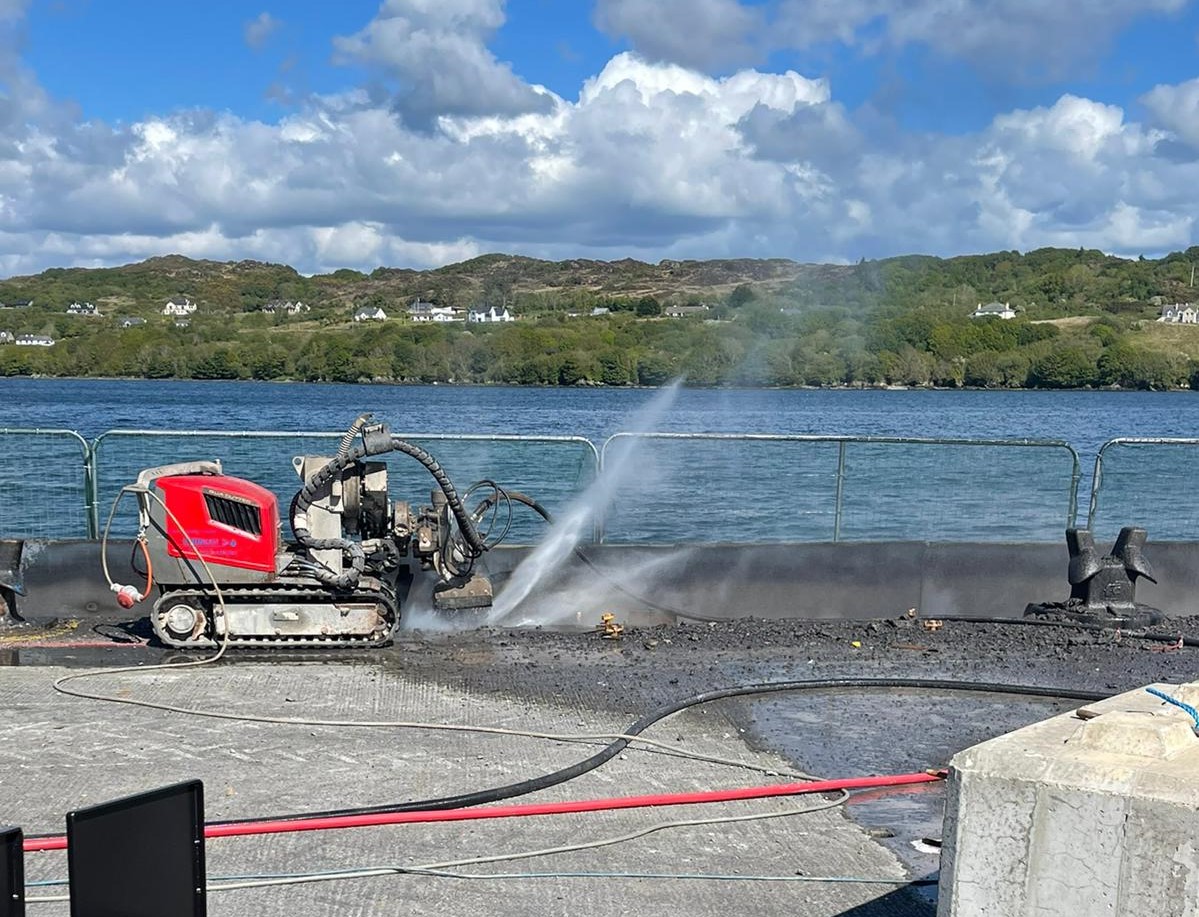A project to upgrade a harbour wall at Ireland’s premier fishing port has proved the important advantages of hydrodemolition when modifying concrete structures.
Killybegs Harbour Centre, in County Donegal, is the newest sheltered deep-water port on the west coast of Ireland. It is a major fishing harbour and is developing a major commercial cargo port.
As part of this strategy, a €30million improvement programme is underway, funded largely by the Irish government, which includes construction of a new 120-metre harbour wall.
This resulted in a civil engineering contractor commissioning UK-based water jetting contractor Hydroblast, a member of the Water Jetting Association, to carry out hydrodemolition on a pier wall.
The project involved upgrading temporary modifications, made in 2016 and 2018, by replacing five wooden piles with 10 new steel piles and the creation of a new permanent concrete pier edge.
Civil engineers working on the project quickly concluded hydrodemolition was the only viable method for carrying out the demolition work needed.
Hydroblast Operations Director Ross McDonald said: “Removing unwanted concrete mechanically, for example with jack hammers, could have caused vibration damage to parts of the slab that needed to be retained.
“Wire cutting would have damaged steel rebar which, again, had to be retained in the new structure.
“Using hydrodemolition overcame these risks. It doesn’t cause vibration damage to surrounding concrete structures, or underlying steel reinforcement.
“It allowed precise removal of the minimum amount of concrete. This controlled costs and enhanced sustainability, creating the smallest possible carbon footprint.
“Also, with all appropriate controls in place, hydrodemolition was safer because hand-arm vibration and dust inhalation risks were minimised.”
The objective was to replace the pier edge with C40/50 concrete. A strip of concrete, 30m-long, 450mm wide, and 450mm deep was removed, equating to just over 6m3 of concrete.
Hydroblast deployed a three-person team to carry out the work. Most of the concrete was removed using an Aqua Cutter 410A hydrodemolition robot. This delivered additional operational and safety advantages.
The robot allows concrete to be removed more quickly. The operator also controlled the robot remotely, while stand away from the water jet.
For this project, the robot was operated at 2200 bar (32,000 psi) with a water flow rate of 122 litres per minute. A hand-held jetting lance was also used to trim a small edge.
Hydroblast’s client put in place a system for containing and disposing of the used jetting water and concrete waste. This involved the installation of a scaffold crash platform along the pier edge, also used by other contractors.
Hydroblast’s operatives wore life jackets as part of a detailed RAMS agreed with the client.
The hydrodemolition project, carried out in May 2021, was completed in three days, a day ahead of schedule, reflecting the speed with which such work can be carried out.
Ross McDonald said: “The client was impressed with the success of the hydro-demolition project, and Hydroblast’s ability to overcome regulatory hurdles, while also fitting in with its own detailed and often changing work schedules.”
The WJA is the UK’s member organisation for the water jetting industry. Members include contractors, equipment manufacturers and hirers, and training providers. The WJA is the UK’s largest provider of accredited water jetting training.
This email address is being protected from spambots. You need JavaScript enabled to view it.



